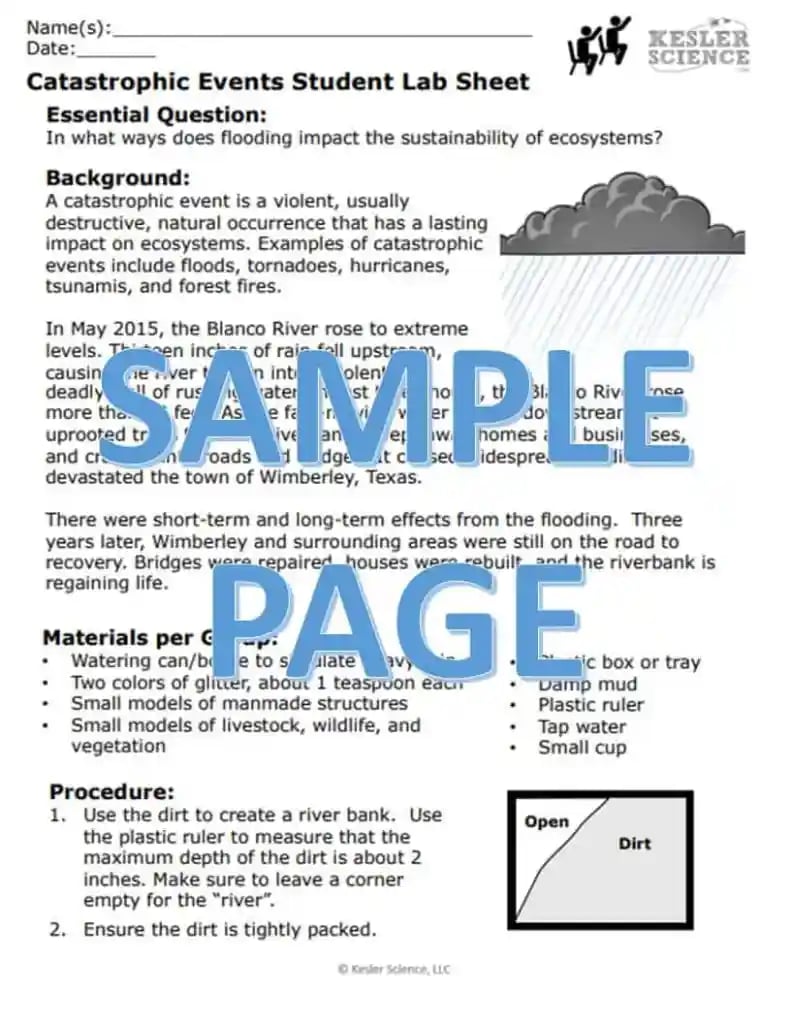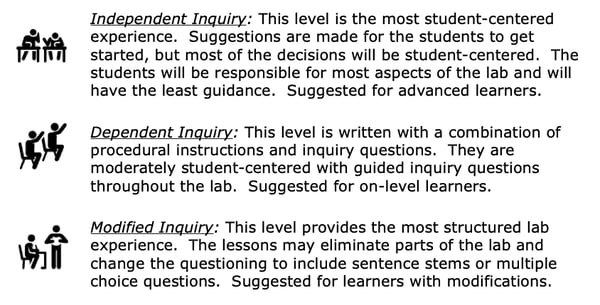Middle School Inquiry Lab on Catastrophic Events
In this lab, students will create an ecosystem, describe and predict what will happen to their ecosystem when the river water rises, recreate a flood, and investigate the impact on the ecosystem.
Each inquiry lab will contain an essential question that will drive the lesson and make students think. For this lesson, the essential question is:
- In what ways does flooding impact the sustainability of ecosystems?
BACKGROUND INFORMATION AND MATERIALS LIST:
Students will begin the lab by reading the essential question and background information. This can be done individually, as lab groups, or as a whole class. If you consider lab groups, you also might include some type of whole class formative checks before digging into the lab.

Materials List:
- safety equipment (goggles)
- watering can/bottle to simulate heavy rain
- 2 colors of glitter, about 1 teaspoon each
- small models of manmade structures
- small models of livestock, wildfire, and vegetation
- plastic box or tray
- damp mud
- plastic ruler
- tap water
- small cup

PROCEDURE:
This lab will certainly get your students thinking critically as well as give them a hands-on experience! First, students will have to create a landform including a hill. Using a ruler to measure an accurate depth for both soil and water, students will create the "base" for their ecosystem. Once their ecosystem is built, students will place animals, plants, and structures that relate to their ecosystem.
Students will take both pre-flood and post-flood measurements of the water source's turbidity. They will also measure the distance traveled by the nutrients in the river and pollutants on land during a flood. This lab will not only give students a first-hand view of how flooding can harm an ecosystem but will help them predict any types of damage future flooding might do.
CHECK FOR UNDERSTANDING:
At this point in the lab, students will be checked for understanding by answering questions about their findings. Here are a few that come with the lab:
- Predict what will happen to certain factors (provided in the lesson) of your ecosystem.
- What causes water clarity to change after a flood? How might life in the river be affected? What would need to happen before water can return to its normal clarity?
CONCLUSION
Students will go back to the essential question and write a CER (Claim, Evidence, Reasoning) to conclude the lab. Once completed, students will reflect back on their learning by answering the following questions:
- What consequences might occur as a result of pollutants spreading in water?
- Are there any benefits that catastrophic flooding can bring to an area?
- What would need to happen before the structures, livestock, wildlife, and vegetation can return to their pre-flood conditions?
MODIFIED AND INDEPENDENT INQUIRY VERSIONS
All of the Kesler Science inquiry labs come with three different modification levels. Each lab is differentiated using the icons below.

STANDARDS ALIGNMENT
TEKS: 7.8A – Predict and describe how catastrophic events such as floods, hurricanes, or tornadoes impact ecosystems.

Download Over $100 in FREE Resources
For Middle School Science
Simply create a login below and gain immediate access to a selection of our Kesler Science product line worth $100 - for FREE. There's a full version of every product type! You'll also join tens of thousands of middle school science teachers who receive timely tips and strategies straight to their inbox.




